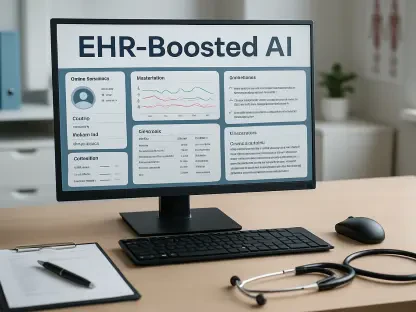Eli Lilly and Company, headquartered in Indianapolis, Indiana, has emerged as a titan in the pharmaceutical world, capturing global attention with a remarkable stock surge and pioneering advancements in drug development. As of November 12, 2025, the company’s market performance reflects not just financial prowess but a deeper commitment to addressing some of humanity’s most pressing health challenges. With a staggering 54% year-over-year revenue increase to $17.60 billion in the third quarter of 2025, Lilly has demonstrated its ability to blend scientific innovation with strategic vision. This surge is fueled by blockbuster drugs targeting obesity, type 2 diabetes, and Alzheimer’s disease—areas where unmet medical needs have long persisted. The company’s trajectory is a testament to its focus on transformative care, earning robust investor confidence and positioning it as a leader in reshaping healthcare. Beyond the impressive numbers, Lilly’s story is one of relentless pursuit of progress, navigating complex markets and competitive pressures while setting new benchmarks for the industry. This exploration delves into the key domains where Lilly is pushing boundaries, from metabolic disease treatments to neurodegenerative breakthroughs, and examines how its strategic maneuvers are redefining what pharmaceutical innovation can achieve.
Transforming Metabolic Disease Management
Eli Lilly’s leadership in the metabolic disease sector stands as a cornerstone of its innovative prowess, driven by flagship drugs Mounjaro and Zepbound. Both therapies, built on tirzepatide, a GLP-1 receptor agonist, have revolutionized approaches to type 2 diabetes and chronic weight management. Zepbound, in particular, marked a significant milestone with FDA approval in late 2024 for treating moderate-to-severe obstructive sleep apnea in obese adults, broadening its therapeutic reach. This expansion underscores Lilly’s knack for identifying and addressing interconnected health issues, positioning the drug as a multifaceted solution. Sales growth for these treatments has been explosive, reflecting both clinical efficacy and market demand. The company’s focus on tackling root physiological mechanisms, rather than merely alleviating symptoms, signals a paradigm shift in how metabolic conditions are managed, offering patients more sustainable outcomes and elevating Lilly’s standing in a crowded field.
Further cementing its dominance, Lilly has demonstrated a competitive edge through rigorous clinical trials that showcase superior results. In a Phase 3b trial known as SURMOUNT-5, Zepbound achieved 47% greater weight loss compared to Novo Nordisk’s Wegovy, a direct rival in the GLP-1 market. This outcome not only highlights the drug’s effectiveness but also illustrates Lilly’s commitment to pushing scientific boundaries. By outperforming established competitors, the company is not just capturing market share but also driving a broader conversation about the future of weight management therapies. Strategic partnerships, such as a November 2025 collaboration with Walmart for direct-to-consumer pricing of Zepbound, enhance accessibility, ensuring that these cutting-edge treatments reach diverse patient populations. This blend of innovation and pragmatism in addressing real-world barriers sets Lilly apart as a forward-thinking player in metabolic care.
Advancing Alzheimer’s Treatment Frontiers
In the challenging arena of neurodegenerative diseases, Eli Lilly has carved out a groundbreaking path with Kisunla, also known as donanemab, a therapy targeting Alzheimer’s disease. A pivotal FDA label update in July 2025 introduced a revised dosing schedule based on recent studies, significantly reducing the risk of amyloid-related imaging abnormalities while preserving the drug’s efficacy. This adjustment has bolstered confidence among healthcare providers and patients alike, addressing long-standing safety concerns in Alzheimer’s treatment. With Kisunla generating $70.1 million in revenue in the first half of 2025, its commercial trajectory reflects growing acceptance and the potential to become a cornerstone in managing early-stage Alzheimer’s. Lilly’s ability to refine its approach based on clinical feedback exemplifies a dedication to patient outcomes over mere market gains, marking a notable advancement in a field often defined by frustration and setbacks.
The broader implications of Kisunla’s progress extend beyond immediate financial returns, igniting hope for tackling historically intractable conditions. By setting a high standard for both safety and effectiveness, Lilly is challenging competitors to elevate their efforts in neurodegenerative research. This development is not just about one drug but about fostering renewed optimism in the scientific community that complex neurological disorders can be addressed with precision and care. Kisunla’s success also paves the way for potential exploration into related areas like Parkinson’s or ALS, where similar innovative approaches could yield results. Lilly’s work here is reshaping perceptions of what’s possible, turning a once-stagnant therapeutic area into a dynamic space for discovery and investment, ultimately benefiting patients who have long awaited meaningful interventions.
Innovating for Accessibility and Adherence
Looking to the future, Eli Lilly’s pipeline holds transformative potential with candidates like orforglipron, an oral GLP-1 therapy currently in Phase 3 trials. Unlike injectable treatments, this oral formulation promises to enhance patient adherence and accessibility, addressing a critical barrier in chronic disease management. Early results from studies in 2025 indicate superior weight loss outcomes compared to existing oral options like Novo Nordisk’s Rybelsus, hinting at a possible game-changer in the weight management space. If approved by mid-to-late 2026, orforglipron could redefine how therapies are delivered, making treatment more convenient for millions. Lilly’s focus on patient-friendly innovations reflects a deep understanding of real-world challenges, ensuring that scientific breakthroughs translate into practical benefits for diverse populations.
This push for accessibility isn’t limited to drug formulation but extends to strategic foresight in market preparation. Lilly’s investment in manufacturing capacity, including a new facility in Wisconsin dedicated to orforglipron production, demonstrates a proactive approach to meeting anticipated global demand. By anticipating logistical needs early, the company aims to avoid supply bottlenecks that often plague high-demand therapies. Moreover, the inclusion of orforglipron in the FDA Commissioner’s National Priority Review program signals regulatory recognition of its potential to address unmet needs, possibly accelerating its path to market. This blend of innovation in drug design and operational planning highlights Lilly’s holistic approach to redefining pharmaceutical impact, ensuring that cutting-edge solutions don’t remain out of reach for those who need them most.
Mastering Strategic Market Positioning
Eli Lilly’s innovation transcends laboratory achievements, encompassing strategic maneuvers that solidify its market leadership. A notable collaboration in November 2025 with Walmart for direct-to-consumer pricing of Zepbound exemplifies a commitment to affordability, breaking down financial barriers to access. Additionally, a deal with the U.S. administration to expand Medicare and Medicaid coverage for this drug ensures broader patient reach, aligning corporate goals with public health priorities. These partnerships are not mere business transactions but calculated steps to integrate Lilly’s therapies into everyday healthcare systems, enhancing their real-world impact. By prioritizing accessibility alongside innovation, Lilly is setting a precedent for how pharmaceutical giants can balance profitability with societal benefit.
Equally important is Lilly’s adept navigation of regulatory landscapes and market dynamics, which further cements its position. The company’s ability to secure expanded indications for existing drugs, like Zepbound’s approval for sleep apnea, showcases a keen understanding of evolving therapeutic needs. Coupled with efforts to improve safety profiles through clinical updates, such as those for Kisunla, Lilly demonstrates agility in responding to both scientific and market feedback. This strategic acumen extends to scaling operations, as seen in manufacturing expansions to support multiple high-demand drugs. By aligning innovation with practical deployment, Lilly not only maintains a competitive edge but also influences industry standards, pushing peers to adopt similar integrative approaches in their quest for market relevance and patient trust.
Driving Industry-Wide Progress Through Competition
The competitive landscape in pharmaceuticals is intense, yet Eli Lilly thrives by consistently outmaneuvering rivals. In the GLP-1 market, where Novo Nordisk poses a formidable challenge, Lilly’s superior trial outcomes with Zepbound and the promising potential of orforglipron underscore a relentless drive for excellence. This rivalry is more than a corporate battle; it serves as a catalyst for industry-wide innovation, compelling competitors to accelerate research and development efforts. The ripple effect benefits patients through faster access to advanced treatments and, over time, potentially reduced costs as market dynamics shift. Lilly’s ability to set benchmarks in efficacy and safety pushes the entire sector to elevate standards, transforming competitive pressure into a force for collective progress.
Beyond direct competition, Lilly’s achievements align with and influence broader industry trends shaping pharmaceutical innovation. The surge in interest in mechanism-based therapies, particularly in metabolic care with GLP-1 agonists and emerging multi-agonist drugs like retatrutide, reflects a shift toward holistic treatment approaches. Regulatory bodies are also adapting, as seen in expedited review processes for groundbreaking therapies addressing critical gaps. Lilly both drives and benefits from these trends, positioning itself at the forefront of a rapidly evolving frontier. By championing novel mechanisms and fostering a climate of accelerated advancement, the company is not just redefining its own path but also steering the direction of global healthcare, ensuring that innovation remains a shared pursuit with far-reaching impact.
Reflecting on a Legacy of Breakthroughs
Looking back, Eli Lilly’s journey unfolds as a remarkable saga of scientific triumphs and strategic mastery that reshaped the pharmaceutical landscape. The unprecedented success of drugs like Mounjaro and Zepbound in metabolic care, alongside Kisunla’s strides in Alzheimer’s treatment, stands as enduring milestones that address critical health challenges. These achievements, coupled with a robust pipeline featuring innovations like orforglipron, highlight Lilly’s unwavering commitment to pushing boundaries. As the company navigates fierce competition and complex market dynamics, its influence spurs broader industry progress, setting new standards for efficacy and accessibility. Moving forward, the focus should center on sustaining this momentum through continued pipeline development and strategic expansions. Addressing pricing pressures and scaling manufacturing will be key to maintaining patient trust and market leadership. Lilly’s legacy offers a blueprint for balancing innovation with impact, and the next steps involve deepening global reach and fostering collaborations to ensure that transformative therapies remain within grasp for all who need them.









